Xiaomi Poco X7 Pro two-minute review
For some reason, Chinese phone maker Xiaomi doesn’t make as much of a song-and-dance about devices from its budget sub-brand Poco as it does about those from its other budget sub-brand, Redmi. However, the Poco X7 Pro is a great example of why it should.
Released at the start of 2025 alongside a non-Pro sibling (and some Redmi phones), the Poco X7 Pro has a price that firmly puts it in the cheap phone category, costing less than half the price of a new iPhone. However, it offers enough useful features that you might consider putting down your Apple mobile or Samsung Galaxy S device for this budget blower. The Poco X7 Pro does a great job at pretending to be a premium handset in all departments except the price.
Like many other Pocophone handsets, the X7 Pro is designed with power in mind — it has the same amount of processing power as many 2024 flagships, as well as oodles of RAM and loads of storage space. In my experience, gaming was just as quick and smooth here as on some of the best Android phones.
The display is fantastic-looking too, squeezing extra pixels compared to most Android phones and offering more nits (the measurement of brightness). It’s bright and colorful enough to make iPhone users green (and you’ll be able to tell which shade of green too!).
You can rely on cheap phones to offer huge batteries but again, Poco has gone above and beyond with the X7 Pro, packing in a 6,000mAh battery. That’s one of the biggest power packs you’ll find on a phone that’s not designed for building sites or wilderness survival, and it’ll make sure the average user can text for days on end without needing a recharge.
The version of the Poco X7 Pro I tested also had a faux leather textured cladding which just adds points to the premium tally, however not all versions of the phone are like this. The green and black versions are just plastic.
Not everything is sunshine and rainbows here and, as usual, Poco drops the ball — or, more likely, opts not to carry it in the first place — in the camera department. Photos aren’t awful but they often look denatured and there aren’t many features you can use to super-charge your photography.
Plus, as phone fans will have been able to guess from the word ‘Xiaomi’ in the headline, the phone’s user interface is chock-full of bloatware when you boot it up.
These are little annoyances but I still feel comfortable recommending the Poco X7 Pro as one of the best budget mobiles you can buy right now.
Xiaomi Poco X7 Pro review: price and availability
- Starts at $299 / £309 (roughly AU$480)
- Several variants on offer depending on region
- Only costs a little more than Poco X7
The Poco X7 Pro was announced alongside its non-Pro sibling right at the beginning of January 2025, and went on sale immediately afterwards.
There are a few versions of the Poco X7 Pro. The cheapest has 8GB of RAM, 256GB of storage, and costs $299 / £309 (roughly AU$480). If you want more RAM, the 12GB/256GB model sells for $239 (around £320 / AU$450). The more powerful version that I tested goes for $369 / £349 (around AU$600) and in the US there’s also an Iron Man Edition of the powerful one for $30 more.
As you can tell from the prices I’ve shared, different options are available in different regions. It’s rare to see a Xiaomi phone in the US but the company lists itself on Amazon in the States.
I tested the Poco X7 Pro for a week without knowing the price, and was very surprised at how little it cost when I finally found out. It’s a great-value phone which gives buyers on a budget a really solid option.
For context, the Poco X7 costs $314 / £249 for its cheapest option, and it has a few spec downgrades across the board including a weaker processor and a smaller battery. It’s still pretty good value for money, though.
Xiaomi Poco X7 Pro review: specs
| Header Cell – Column 0 | Header Cell – Column 1 |
|---|---|
| Dimensions: | 160.8 x 75.2 x 8.3mm |
| Weight: | 195g |
| Screen: | 6.67-inch 20:9 FHD (1220 x 2712) 120Hz AMOLED |
| Chipset: | Mediatek Dimensity 8400 Ultra |
| RAM: | 8GB / 12GB |
| Storage: | 256GB / 512GB |
| OS: | Android 15, HyperOS 2 |
| Primary camera: | 50MP, f/1.5 |
| Ultra-wide camera: | 8MP f/2.2 |
| Front camera: | 20MP, f/2.2 |
| Audio: | Stereo speakers |
| Battery: | 6,000mAh |
| Charging: | 90W wired |
| Colors: | Green, black, yellow |
Xiaomi Poco X7 Pro review: design
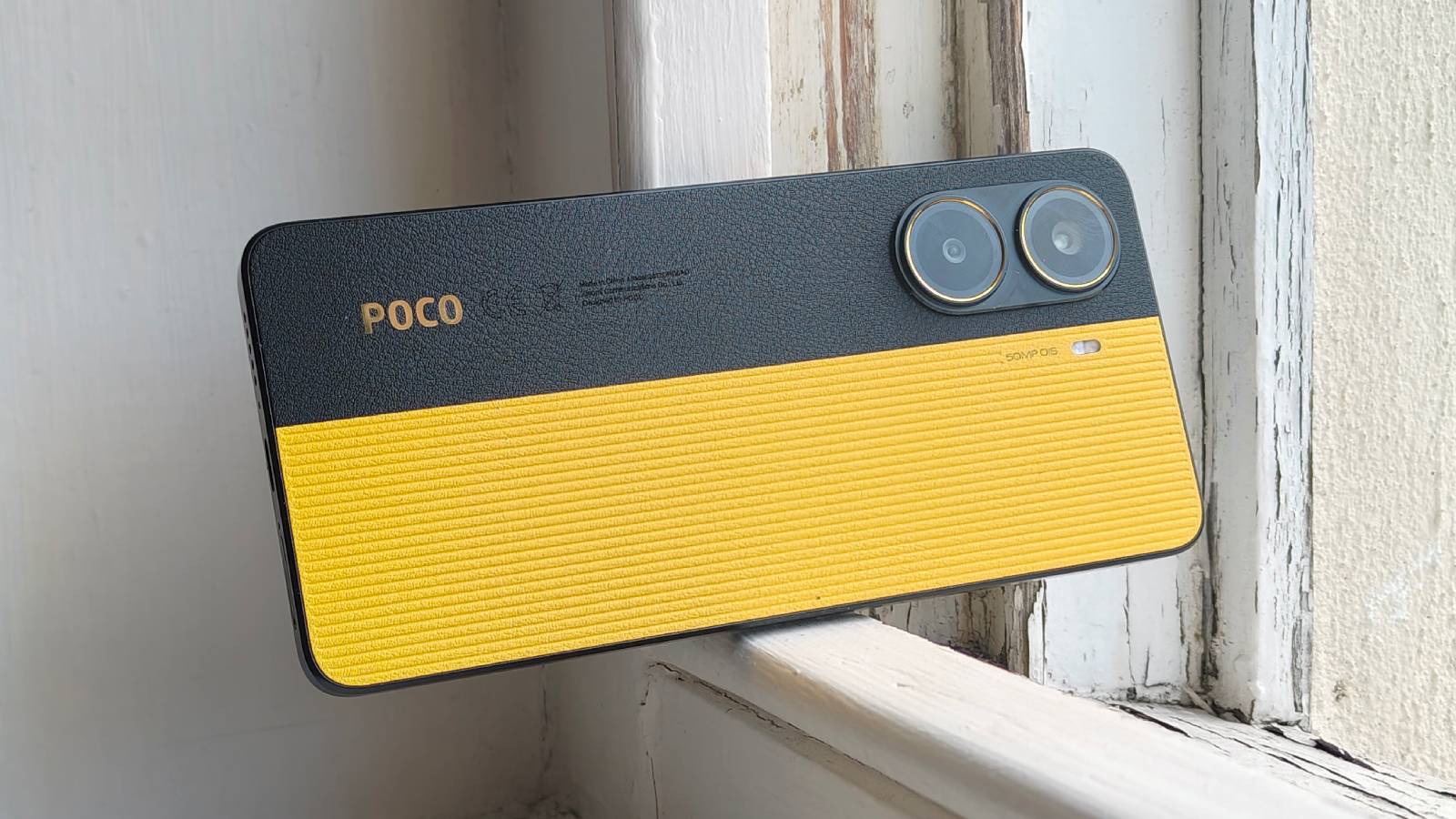
- Three color options
- Mid-sized phone that’ll be big for some users
- IP68 protection
Depending on which version of the Poco X7 Pro you pick up, you might deem it a generic-looking Android phone, or one that looks oddly like a race car.
The phone comes in black or green versions – which clad the mobile in a plastic frame – or, as you can see from the review images, a more unique yellow-and-black one. This version, which uses silicone polymer to create a textured faux leather feel, reminds me of racing-themed mobiles like the Realme GT, and it certainly is a distinctive look. It also feels more premium, and a touch more grip-able in the hand. If you think it’s a bit too ‘extra’, though, you should probably opt for the standard models.
These variants have the almost same dimensions: they’re 160.75 x 75.24 x 8.29 (add 0.14mm to that latter version for the yellow option) and weigh 195g (add 3g for yellow). A difference of under a millimeter, and only 3 grams, is a pretty negligible size and weight difference.
The phone has flat edges, so I could stand mine upright without a support, but they’re not as comfortable to hold in the hand as a curved-edge mobile. The power button and volume rocker are on the right edge while the USB-C port is on the bottom edge.
If you’ve got big hands, you’ll be alright with the Poco X7 Pro, but people with smaller ones should know that you probably won’t be able to reach the volume rocker — I couldn’t and I have pretty average-length digits.
All versions of the phone have IP68 certification, protecting you from submersion in water (for a limited time) and dust ingress. The Poco X7 Pro felt pretty hardy to me.
Xiaomi Poco X7 Pro review: display
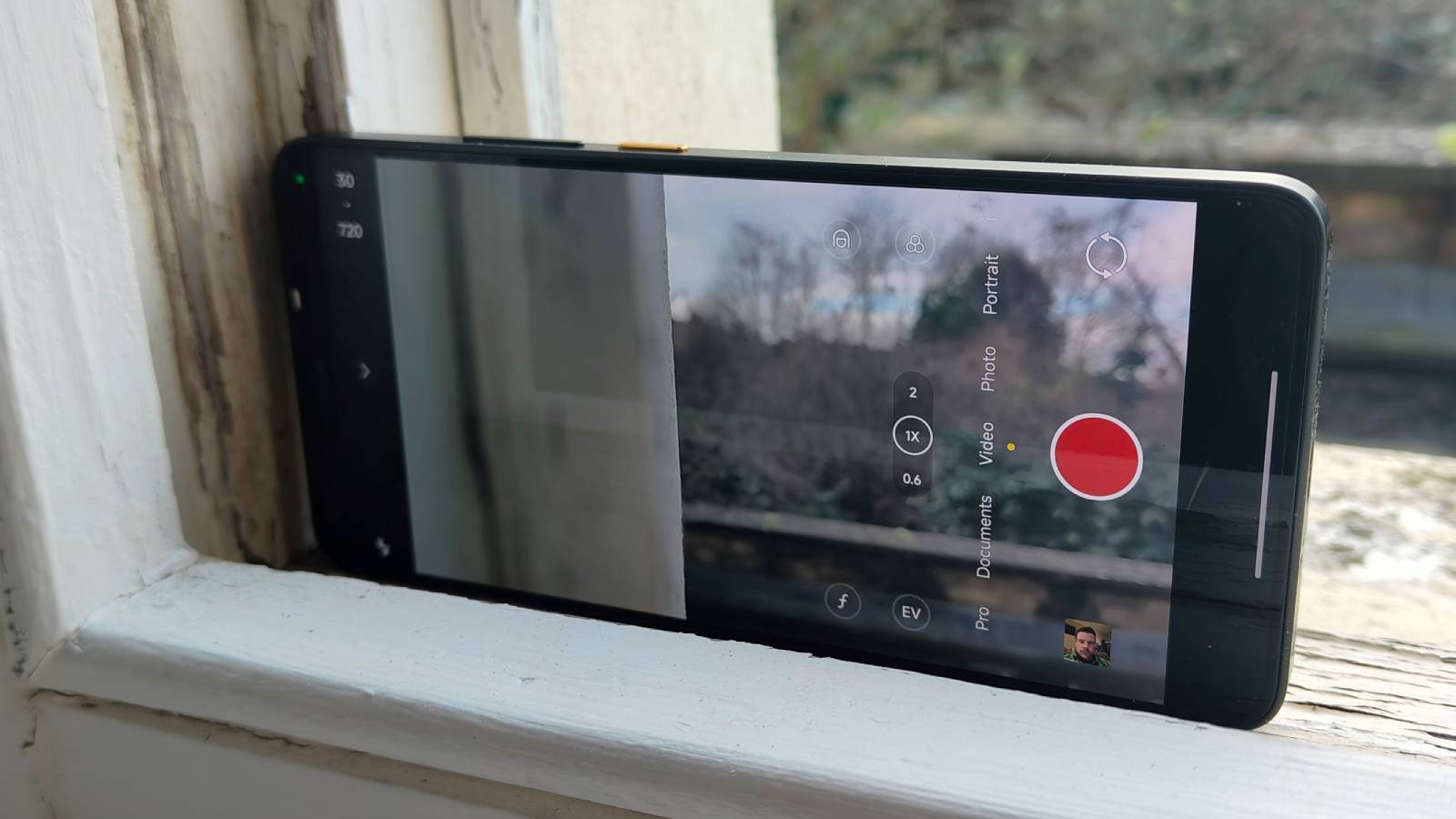
- 6.67 inches, 1220 x 2712 resolution
- High max brightness and 120Hz refresh
- Well-protected with Corning Gorilla Glass 7i
The Poco X7 Pro’s display clocks in at 6.67 inches, which is basically the average size for a Xiaomi mobile — it’s nice and big without being too unwieldy.
That’s one of the only areas in which the Poco phone aims for ‘average’, though, because many other of its display specs exceed others at its price tag.
You get a few more pixels than on most of its FHD rivals with a 1220 x 2712 resolution, and the maximum brightness reaches up to 3200 nits (that’s in lab conditions, at least, but from my testing, it got really bright).
That latter spec, combined with the use of an AMOLED panel, means that you can get some pretty vibrant colors out of the Poco X7 Pro.
Two other important specs are the 120Hz refresh rate — this feature is par for the course on most Android phones — and the use of Corning Gorilla Glass 7i, which probably explains how the X7 Pro survived so many drops during my testing.
Xiaomi Poco X7 Pro review: software
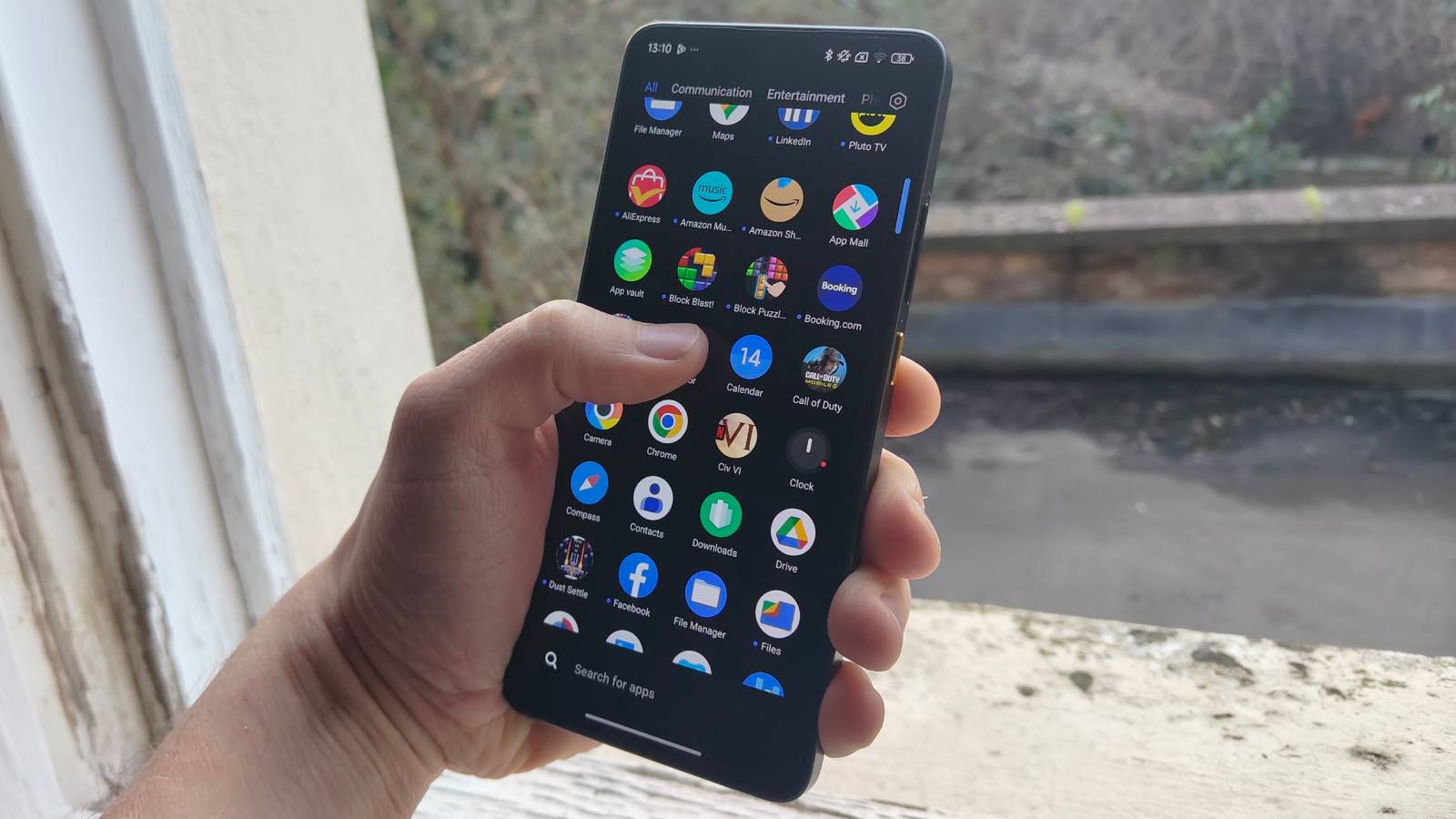
- Android 15 with Xiaomi’s HyperOS 2 over the top
- Three years of OS updates and four of security updates
- Bloatware-riddled software
When you boot up the Poco X7 Pro, you’ll find it running Android 15 with Xiaomi’s HyperOS running over the top. The company has promised three years of updates for the phone, and an extra one of security updates.
A common gripe I have with Xiaomi software is that it comes chock-full of pre-installed third-party apps. These include a huge number of ‘normal’ ones like calculators, compasses and a calendar but for me there were also six games, a Poco app and nine third-party apps including some that I studiously avoid.
If, like me, you’re never going to use AliExpress or WPS Office (or whatever the pre-installed apps are in your region), then you’ll have to start with an app-deletion blitz when you first start using your phone.
Beyond that, HyperOS functions much the same as other Android user interfaces, in that you’re given lots of customization freedom. You can choose the font, always-on display, how icons look, how notifications appear, whether new apps get added to an app drawer or straight to your homepage, and more.
A few AI features are new here; the Notes app can translate, proofread, or summarize your notes; Recorder can create transcriptions; and videos can get AI subtitles. However, these aren’t available in all regions and none were enabled on my test phone.
Xiaomi Poco X7 Pro review: cameras
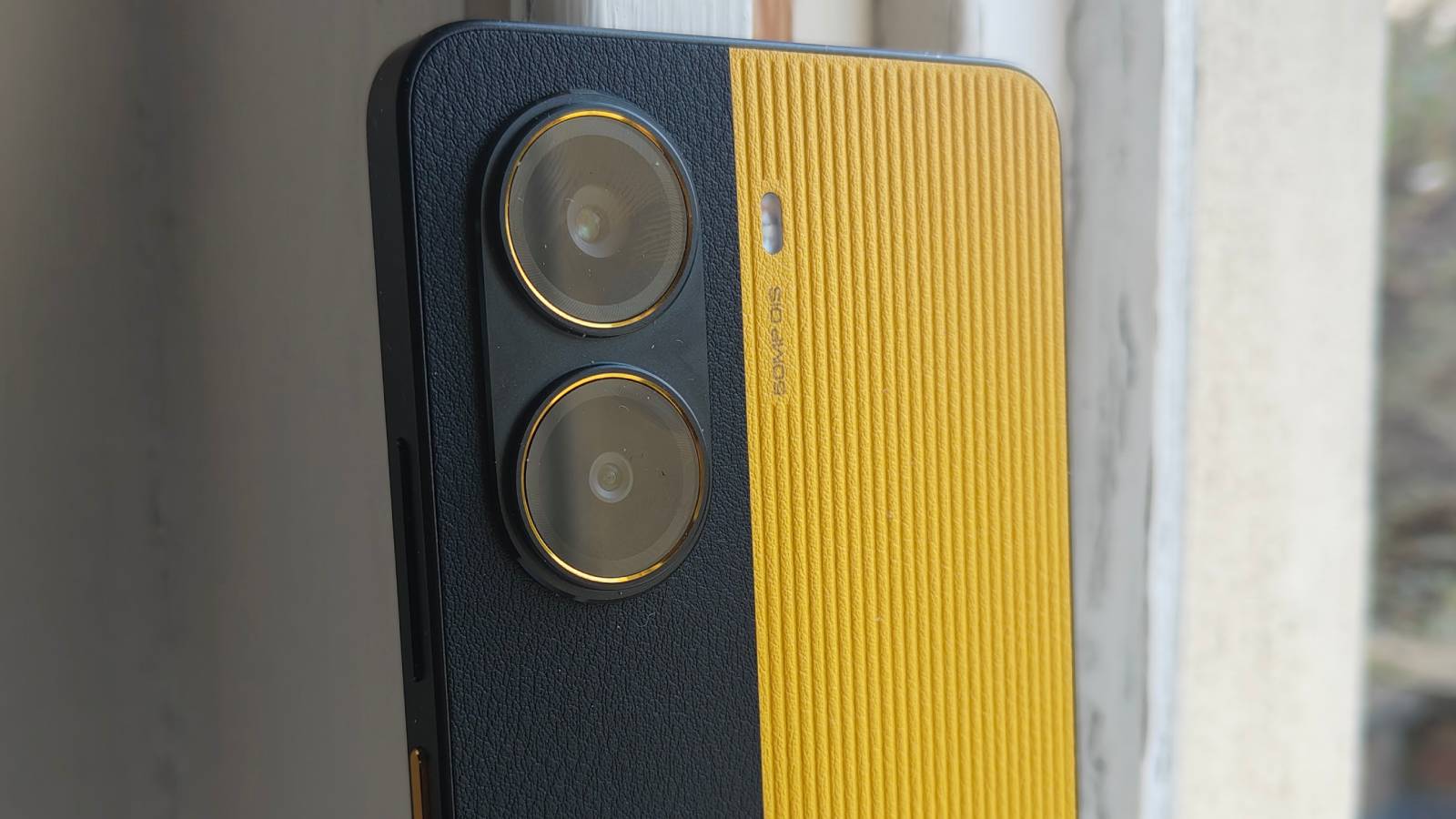
- 50MP main and 8MP ultra-wide cameras, 20MP for selfies
- Photos look a little dull
- Some AI features coming to the phone after release
Camera capabilities have never been the focal point of Poco devices and that stays true here. The phone packs 50MP f/1.5 main and 8MP f/2.2 ultra-wide cameras on the back as well as a 20MP f/2.2 selfie camera on the front, and both are totally fit for purpose without being wildly impressive.
Pictures taken on the main camera are clear and bright but lack a bit of flair and color, leading to lifeless shots. It’s apparent in some pictures more than others but greenery lost some zest.
The phone is really quick to try and edit your pictures afterwards though. By default, all are taken in Live Photo mode, in case you press the shutter button at the wrong time and want to see a frame just before or after you pressed. The gallery also employs very obvious processing when you zoom into a photo, noticeably changing its color profile, which sometimes results in worse pictures.
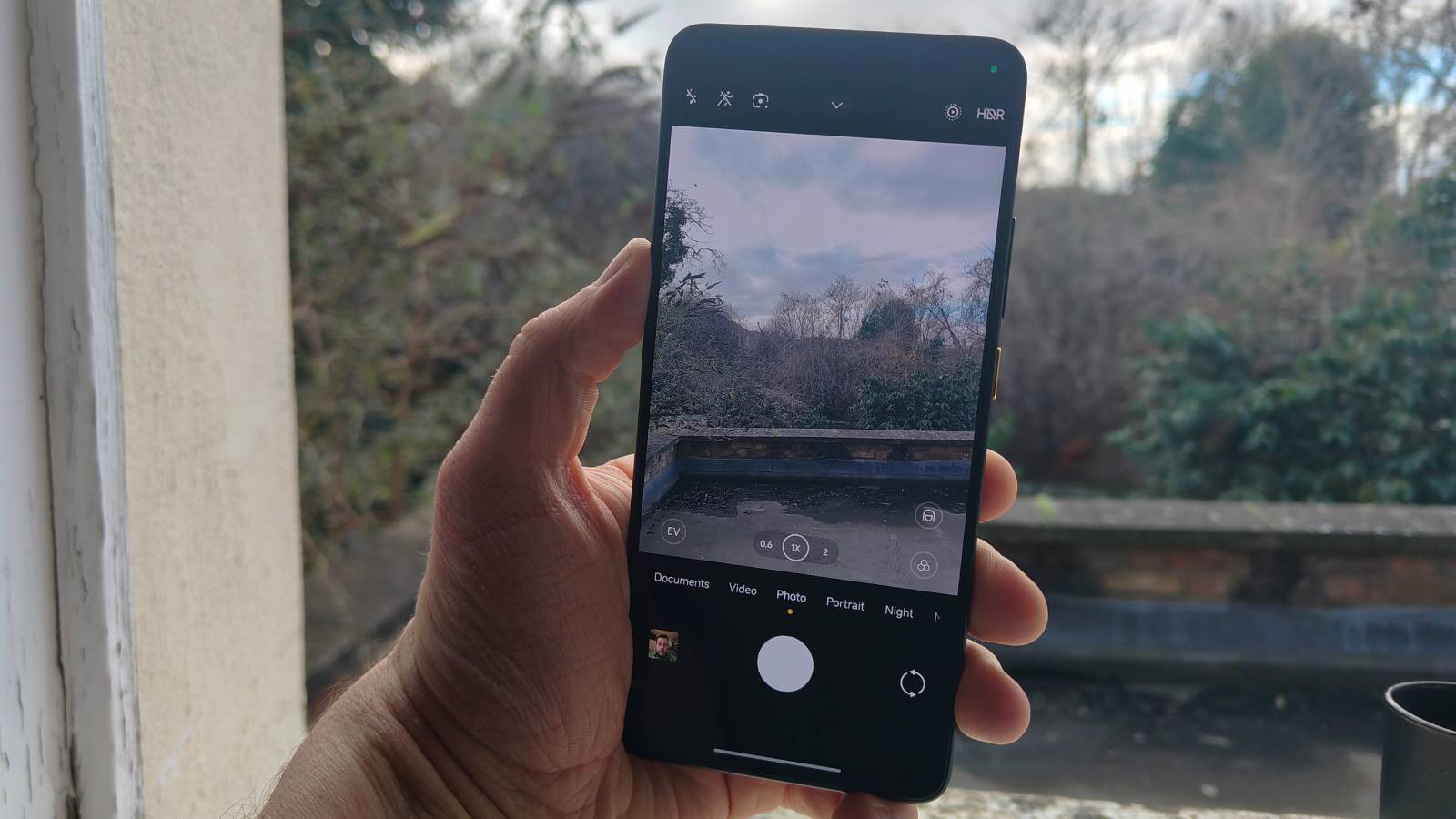
A warning to buyers: the rear camera is exactly where you rest your fingers when you’re holding the phone landscape to take a photo. Remember to move your fingers out of the way — about half the snaps I took during my main photo session have my finger poking into the frame.
Jump over to the ultra-wide camera and you’re getting pictures that don’t look great. They’re desaturated and lose lots of detail in darker areas, leading to a lifeless photo.
Video recording goes up to 4K and 60fps and there’s also Director mode, which lets you adjust things like the white balance, ISO, and aperture for video recording. Not all budget phones have this so it’s a nice addition, although I wouldn’t recommend the X7 Pro for prospective Oscar-winners.
‘Fine’ is also an accurate description of pictures taken on the front-facing camera. Generally, selfies were clear and bright, although again the colors weren’t always sparkling. Portrait mode sometimes had trouble working out where my hair began and ended but it was good at applying correct depth to objects in the mid- and background.
Other than the ones already mentioned, the Poco X7 Pro ticks off the usual camera modes: document scanning, night photography, high-res to shoot at 50MP instead of using pixel binning, slow motion filming, and Pro mode.
Some of the headline camera features of the Poco X7 Pro are AI-based ones: AI Erase Pro works like Magic Eraser to delete unwanted elements of photos, while AI Image Expansion reframes and expands snaps to change their composition. At the time of testing, though, these aren’t available on the phone — Xiaomi says they’ll arrive around March 2025 — so I didn’t test them.
Xiaomi Poco X7 Pro camera samples
Xiaomi Poco X7 Pro: performance and audio
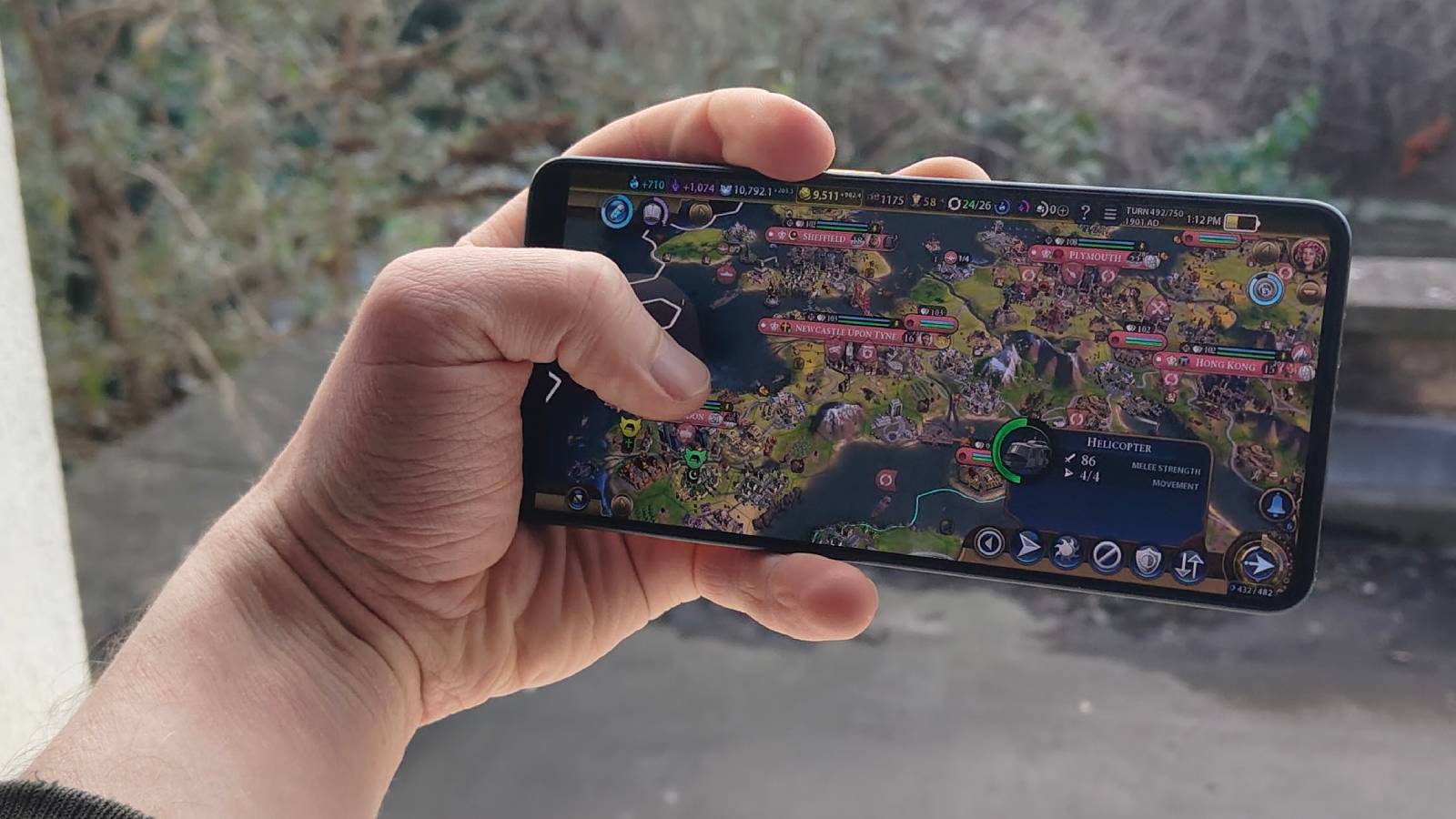
- Packs a Dimensity 8400 Ultra chipset
- Really powerful for gaming
- Stereo audio but no 3.5mm jack
The Poco X7 Pro is powered by the Dimensity 8400 Ultra, a top-end chipset from Mediatek. It’s paired with RAM and storage that depends on whichever variant you picked up: 8/256GB or 16/512GB.
I had the latter and the phone was fast – it didn’t feel much different to use than a flagship which would cost you $/£1,000 more. Gaming was quick and easy, with the phone handling online titles and intensive single-player ones better than any other mobile I’ve tested at the price. It was seriously impressive.
Moreover, when I was using the mobile intensively, I never suffered any stuttering, and the phone didn’t overheat at all either. If you’re a mobile gamer, I’m going to have to give this device two thumbs up.
In a Geekbench 6 multi-core test, the average score was in the 6,100s, which cements this as a really solid performance phone. It puts it in league with 2024’s top-end phones, and possibly 2025’s too.
For audio, there’s no 3.5mm headphone jack, so if you like wired music you’ll have to get an adaptor for the USB-C jack, and if not rely on the BlueTooth 5.4. There are also stereo speakers and these are fine for unfussy gamers but audiophiles won’t be rocked out of their socks.
- Performance score: 4.5 / 5
Xiaomi Poco X7 Pro review: battery life
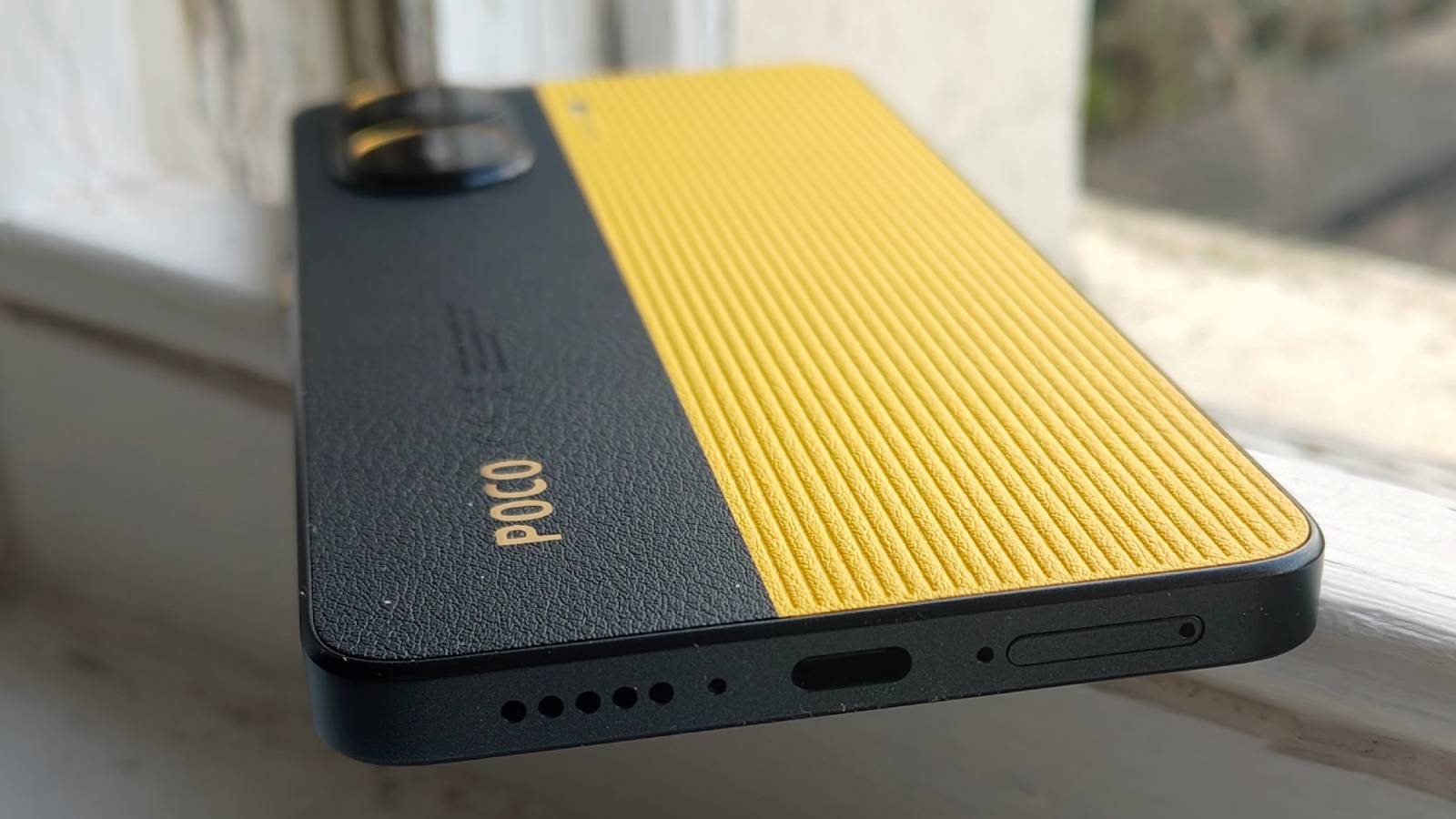
- Huge 6,000mAh battery
- Lasts for about two days of use
- 90W fast charging
Phone batteries are constantly creeping up in size, as the Poco X7 Pro reminded me: it has a 6,000mAh power pack, which is bigger than that of the standard Poco X7 or the Poco X6 Pro. In fact, it’s rare to see mobiles with power packs quite this big.
People with battery anxiety, then, will find the X7 Pro a breath of fresh air — it can keep your phone ticking through intensive gaming blasts or long days out.
From my testing, the phone waltzed through a day of use and marched steadily into the second day before needing a recharge. And I used it pretty intensively too — if you don’t pick up your mobile much during the day, I can see it lasting through two full days of use.
On the topic of charging, it’s 90W, which is nice and fast. There’s no wireless or reverse charging, but with speeds like that, I can forgive it.
Poco predicts that this will see your X7 Pro go from empty to full in just over 40 minutes — in my testing period I usually powered the phone from about 10-20% to full and it took about half an hour. It’s a nice fast speed that ensures you can keep the X7 Pro going with brief charging windows, instead of having to tether your mobile to the wall for ages.
Xiaomi Poco X7 Pro review: value
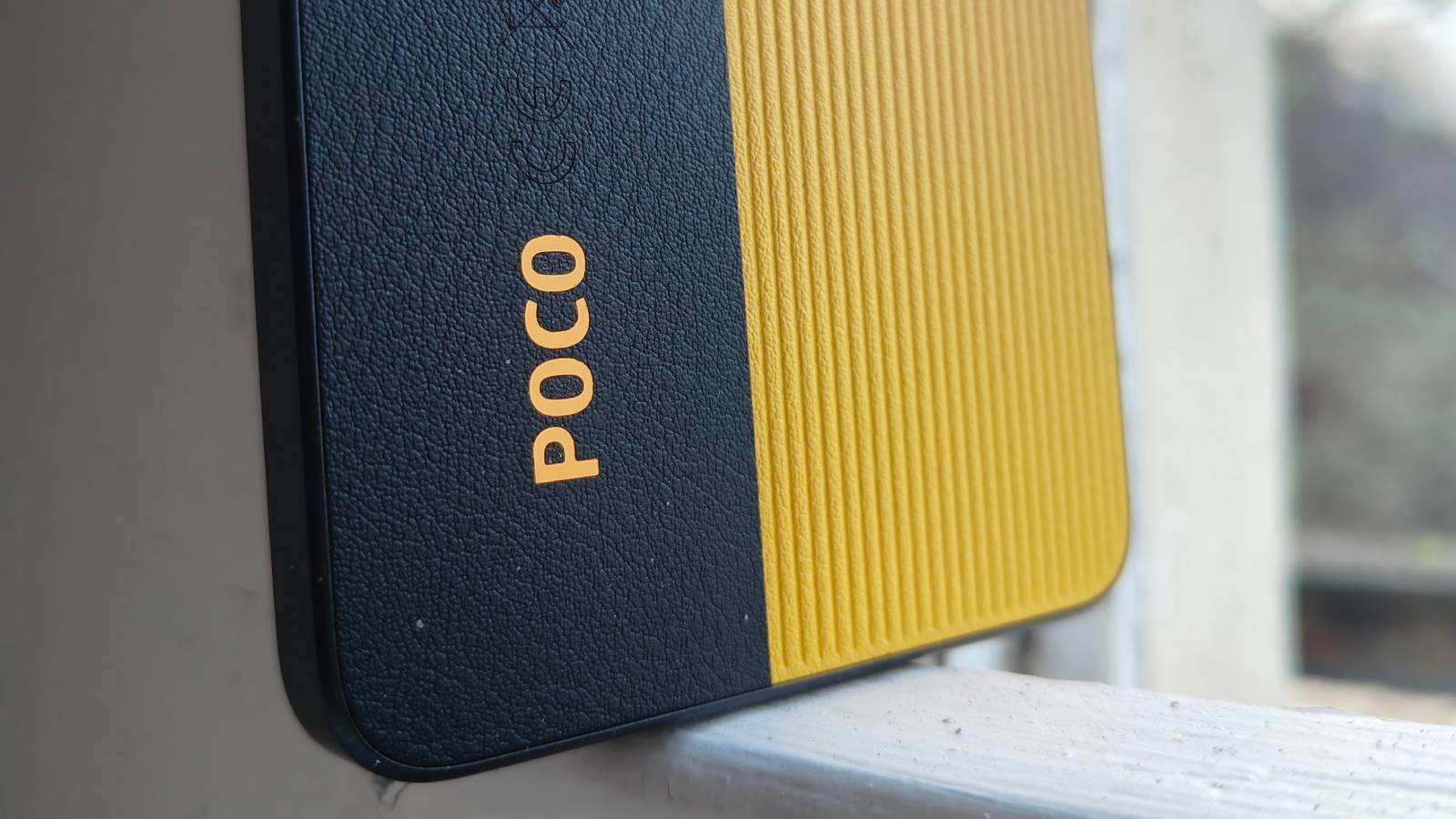
For certain kinds of users, the Poco X7 Pro offers incredible value for money. It’s relatively cheap but has an impressively fast chipset and great-looking screen.
If you’re into your entertainment, be it gaming or streaming TV shows on the go, you’ll be getting a steal with the X7 Pro.
The Poco still makes a great value proposition for other kinds of users, and it’ll go toe-to-toe with much more expensive rivals, though if you want a camera phone, it won’t cut the mustard.
Should you buy the Xiaomi Poco X7 Pro?
| Attributes | Notes | Rating |
|---|---|---|
| Value | You’d be hard-pressed to find another phone with specs like these for this cheap a price. | 4.5 / 5 |
| Design | A generic Android design despite the faux-leather cladding. | 3.5 / 5 |
| Display | A good-looking display that’s bright and colorful. | 4 / 5 |
| Software | HyperOS has a fair amount of bloatware. | 3.5 / 5 |
| Camera | The Poco isn’t great for photography, but it’ll get the job done. | 3 / 5 |
| Performance | A blazingly powerful phone for gamers. | 4.5 / 5 |
| Battery | It’ll last you a long time, and it charges very quickly. | 4 / 5 |
Buy it if…
Don’t buy it if…
Poco X7 Pro review: Also consider
If you want to know what else is out there at this price, beyond the Poco X7 Pro, here are some other phones you should consider:
| Header Cell – Column 0 | Poco X7 Pro | Poco X7 | Moto G85 | Samsung Galaxy A35 |
|---|---|---|---|---|
| Starting price (at launch): | $299 / £309 (roughly AU$480) | $314 / £249 (roughly AU$400) | $240 / £299 (roughly AU$460) | $399.99 / £339.99 / AU$549.99 |
| Dimensions: | 160.8 x 75.2 x 8.3mm | 162.3 x 74.4 x 8.4mm | 161.9 x 73.1 x 7.6mm | 161.7 x 78 x 8.2mm |
| Weight: | 195g | 185.5g | 171g | 209g |
| OS (at launch): | Android 15, HyperOS 2 | Android 14, HyperOS | Android 14 | Android 14, One UI 6.1 |
| Screen Size: | 6.67-inch | 6.67-inch | 6.67-inch | 6.6-inch |
| Resolution: | 1220 x 2712 | 1220 x 2712 | 1080 x 2400 | 1080 x 2340 |
| CPU: | Mediatek Dimensity 8400 Ultra | Mediatek Dimensity 7300 Ultra | Snapdragon 6s Gen 3 | Exynos 1380 |
| RAM: | 8GB / 12GB | 8GB / 12GB | 8GB / 12GB | 6GB |
| Storage (from): | 256GB / 512GB | 128GB / 256GB / 512GB | 128GB / 256GB | 128GB |
| Battery: | 6,000mAh | 5,110mAh | 5,000mAh | 5,000mAh |
| Rear Cameras: | 50MP main, 8MP ultra-wide | 50MP main, 8MP ultra-wide, 2MP macro | 50MP main, 8MP ultra-wide | 50MP main, 8MP ultra-wide. 5MP macro |
| Front camera: | 20MP | 20MP | 32MP | 13MP |
How I tested the Poco X7 Pro
- Review test period = 2 weeks
- Testing included = Everyday usage, including web browsing, social media, photography, video calling, gaming, streaming video, music playback
- Tools used = Geekbench 6, Geekbench ML, GFXBench, native Android stats
I tested the Poco X7 Pro for just over two weeks for this review.
To test it, I put it through the paces of my normal phone: I texted, streamed music and TV, took photos, navigated my way around the city, and woke up from its alarms. Significantly, I also played lots of games on it.
As well as real-world use, the phone saw me perform some more ‘scientific’ tests including performance benchmarking and charging speed tests.
I’ve been testing smartphones for TechRadar for six years now, and in that time have tested plenty of low-budget mobiles including loads of Poco and Xiaomi devices.
First reviewed January 2025









